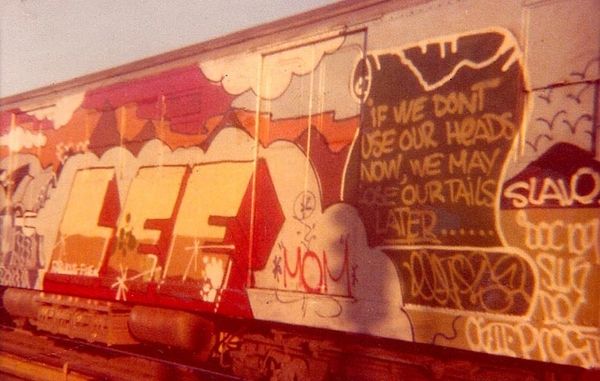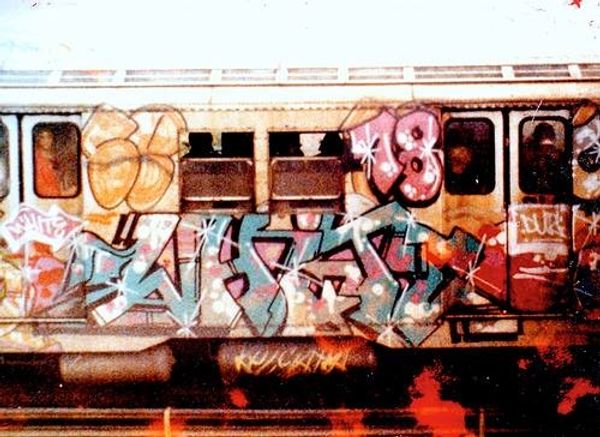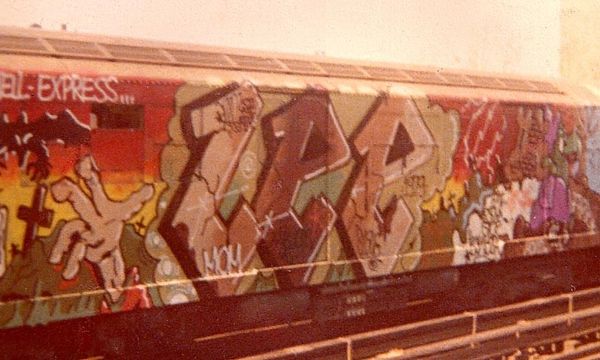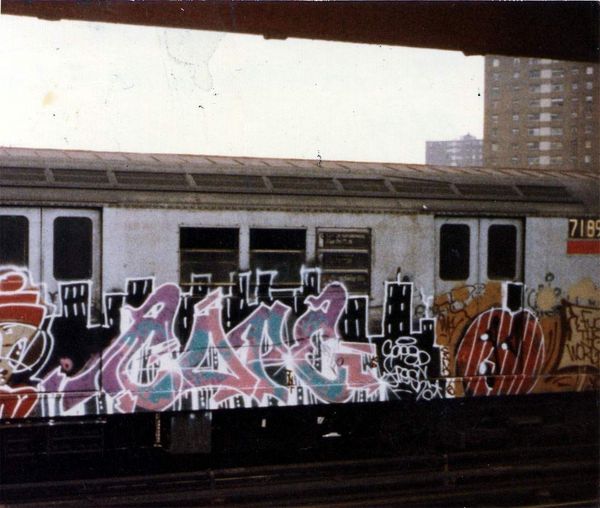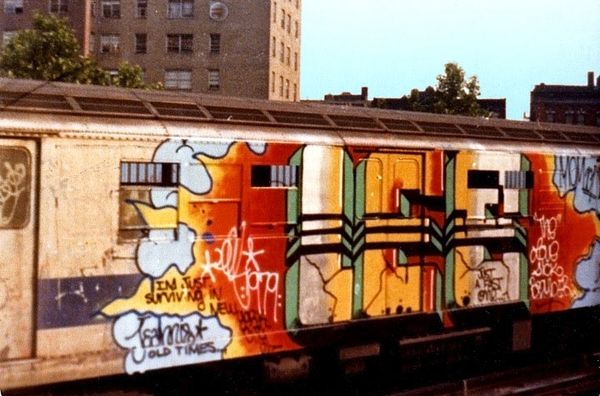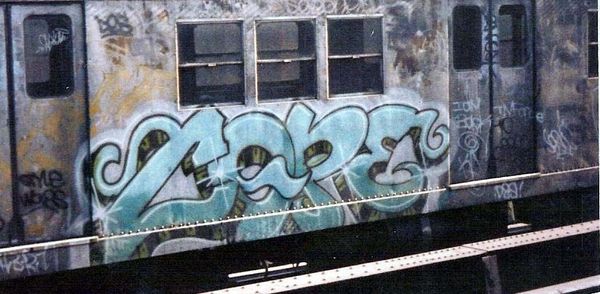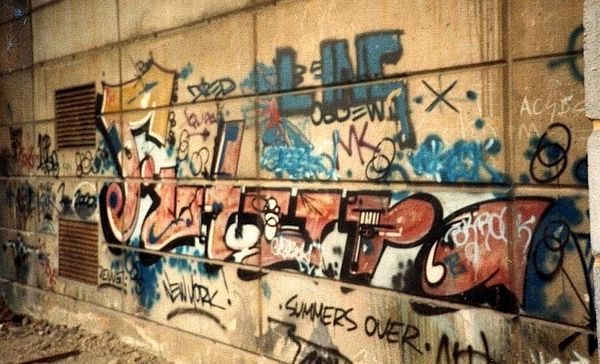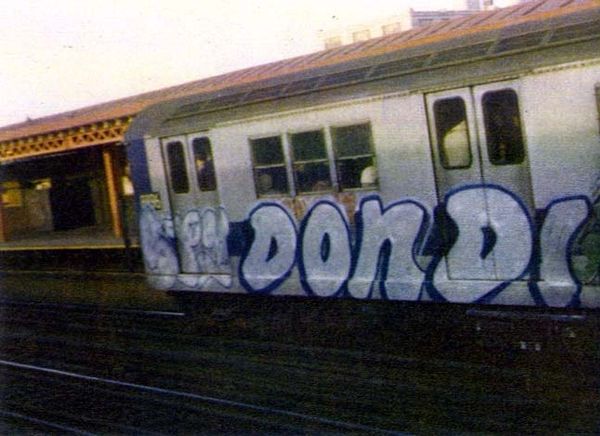
acrylic-paint, public-art
#
street-art
#
postmodernism
#
street art
#
acrylic-paint
#
public-art
#
city scape
#
graffiti-art
#
urban art
#
street photography
#
cityscape
Copyright: Lee Quinones,Fair Use
Curator: Looking at Lee Quinones' "Heaven is Life," created in 1977 with acrylic paint, I'm immediately struck by its raw optimism. The bold colors and simple, almost childlike imagery contrast sharply with the medium – a subway car, traditionally a symbol of urban grit. Editor: Absolutely, that tension is key. What looks like naive imagery is powerfully defiant within its social and political context. Quinones’ work challenged the established art world, turning public transportation into a mobile canvas for marginalized voices. The 70s in New York were defined by systemic failures. Curator: Exactly. Quinones wasn't just decorating a train; he was making a profound statement. The words "Heaven is Life," painted so prominently, speak to the power of the present moment, especially relevant when many saw only urban decay and hopelessness. This wasn't just street art; it was a socio-political act. Editor: I see it as part of a larger cultural rebellion, reflecting the birth of hip-hop and a surge of creative energy in Black and Latinx communities facing oppression. Painting trains became an act of reclaiming public space, asserting identity and demanding visibility. Think about how the materials contributed to this defiance: everyday spray paint becomes a tool for speaking truth to power. Curator: It's fascinating how the moving subway car also disrupts conventional notions of the art gallery. "Heaven is Life" travels to different neighborhoods, becoming accessible to all social classes regardless of who decided to enter into the “proper” cultural spheres, blurring the line between private and public space. It questions what, where, and who defines art. Editor: The train as a canvas allowed artists to circumvent the gatekeepers of the art world, sparking vital conversations about power and representation that are ongoing today. That’s where I connect his contribution to postmodern art. Curator: Right. We can consider "Heaven is Life" as a powerful articulation of that sentiment. It transforms a symbol of urban decay into a message of hope, carried across the city by a moving canvas. Editor: Reflecting on it, "Heaven is Life" serves as a reminder that artistic expression can emerge from the most unexpected places, pushing us to redefine the boundaries of art itself. Curator: Yes, a thought-provoking piece that intertwines art and activism seamlessly. It highlights art's capability to inspire change and create impactful, immediate, experiences, something to really consider today.
Comments
No comments
Be the first to comment and join the conversation on the ultimate creative platform.
